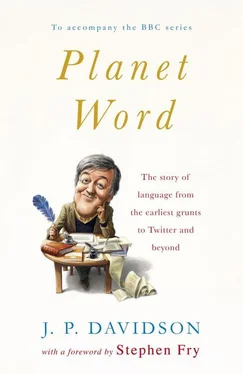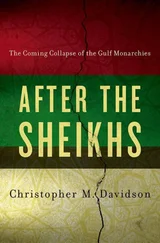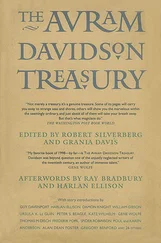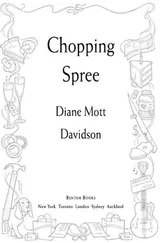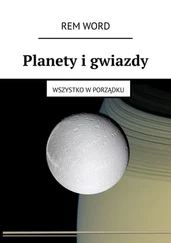El General, Ben Amor, emerged from jail a star. He immediately put out a new rap — an ‘ode to Arab revolution’ — with the lyrics ‘Egypt, Algeria, Libya, Morocco, all must be liberated / Long live free Tunisia.’
As El General proves, language is a powerful tool. It should be used with care but it shouldn’t be restricted. In fact it’s impossible to put a lid on language, and, by making words or expressions taboo, you give them even more power. Language should be left to grow and evolve into more colourful and creative forms for future generations.
Writing is, quite simply, the greatest invention in human history — in fact, it made history possible. ‘Without words, without writing and without books,’ said the German author Hermann Hesse, ‘there would be no history, there would be no concept of humanity.’ Or, as H. G. Wells put it, ‘Writing put agreements, laws, commandments on record. It made the growth of states larger than the old city states possible … The command of priest or king could go far beyond his sight and voice and could survive his death.’ We humans have been around for nearly 200,000 years, but we’ve only had writing for a little over five millennia. It’s taken us that long to develop from pictures and scratches on clay and parchment to emailing on a laptop computer. Different writing systems evolved gradually over long periods of time, and there’s still debate about which was the very first. The British Museum has thousands of objects with ancient writing on them, some as old as 5,000 years. Some historians say the hieroglyphs of Egypt have the edge, but Assyriologists like Irving Finkel, who study the ancient Mesopotamian culture, claim that its writing form — called cuneiform — is the oldest.
Mesopotamia, which means the land ‘between the rivers’, was the region around the Tigris and Euphrates rivers, largely forming modern-day Iraq and parts of Syria, Turkey and Iran. Around the third millennium BC, Mesopotamia was divided into the Sumerian civilization in the south and the Akkadian in the north. It was the Sumerians who invented the fascinating cuneiform writing system that looks like a series of spindly bird tracks. The scribes used a blunt reed, cut at the tip into a wedge shape, which was pressed down into soft clay in various different ways to cut vertical, horizontal and oblique lines. ‘Cuneiform’ comes from the Latin cuneus , meaning ‘wedge’.

A cuneiform inscription dating from 2100 to 2000 BC
The cuneiform writing system was used for more than 3,000 years. It developed from pictographs, which were realistic drawings to communicate an idea, into a syllabary form, where signs stood for sounds as well as words. For example, says Finkel, initially there would be a sign, a picture representing, say, ‘beer’, and every time you wanted to say ‘beer’, you would draw that picture. But later on came a gigantic leap in the journey of how writing developed: the picture sign came to stand, not for what it looked like, but for the sound that sign represented. What began as symbolic drawing evolved into a system which could be used to express a language phonetically. So, in the case of ‘beer’, a sign could stand for any word that sounded like beer , or had a b sound, and it could be varied and developed, and soon you had a single unit of expression of sound, rather than a slightly more clumsy series of pictures. That gave flexibility and adaptability, and nuance, so that instead of just being able to say, ‘three bottles of milk’ and drawing the sign three times, you could say, ‘Please leave three milk bottles on Sunday morning. Last week it was off.’
Why did people want to have a written form of communication in the first place? On the simplest level it was for making lists, for counting, for keeping a record in areas like trading and tax and money. Mesopotamia was largely a population of shepherds and farmers, and archaeologists have found early clay tablets inscribed with lists of sacks of grain and heads of cattle. Later tablets contain more complex information about social structures, e.g. what sort of jobs people did and how financial dealings were conducted; or they preserve religious texts and stories like the Epic of Gilgamesh , which tells of a legendary Sumerian king’s quest for immortality.
We’ve even unearthed the ancient equivalent of school jotters — tablets found in Sumerian schools which show the teacher’s text on one side, and the pupil’s copy on the other, so we know how people learned to write cuneiform. It wasn’t an easy task: the ancient Mesopotamians had to master the art of inscribing hundreds of signs and learn the various meanings that they might have, depending on the context. It was an art confined to a small number of scribes, who became an elite group in society, more powerful sometimes than the illiterate courtiers or even the king himself. Knowing how to write was a source of power, and a privilege; it took years to learn and was never a system designed for the masses.
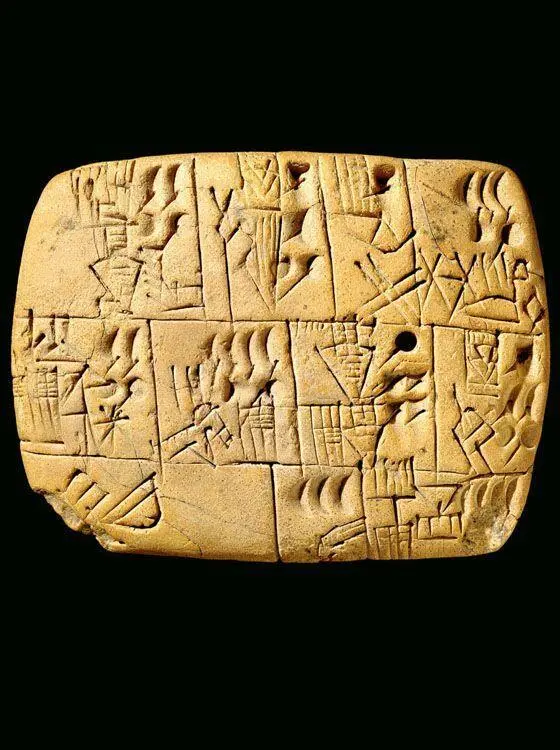
Recording the allocation of beer. An upright jar with a pointed base appears three times on this tablet
Cuneiform expert Irving Finkel has a special chart with the English alphabet and their cuneiform signs. He teaches children cuneiform by getting them to write their name down with a pencil, divide it up into syllables and then find the syllables on the chart with which their name can be spelt. That’s not simple, because Far Eastern languages have a very specific pool of sounds, and consonants can’t be written on their own, only as vowel-consonant or consonant-vowel.
The fact that cuneiform documents were written in clay has meant that vital tablets have survived for our examination. When ancient libraries or other buildings housing the tablets were burned, the clay was fired and so preserved for posterity. The British Museum has a staggering 130,000 clay tablets in its safe keeping, and there are probably millions more still buried under the sands of Iraq and Syria. That means, Finkel adds casually, there’s about three centuries of work ahead for Assyriologists like him as they continue to learn from these records of humanity’s past.
Professor Finkel is clearly very excited by the vision of the treasures out there but is there actually something fundamental about our species that can be learned from the study of these ancient peoples and their writings? Oh yes, he says. To him, the people who scratched on clay with a reed and told us about their economy and culture and stories are basically just like us. ‘They were afraid of disease and impotence and not having children and having no money and warfare like everybody else,’ he says, ‘and they told lies and they were truthful and they were committed and they were hypocritical.’ He believes we’d know them on the Underground, these ancient people. ‘The whole dazzling range and wonder of the human mind can be plucked out of these tablets. They were written by people like us.’
The clever and crucial thing about cuneiform writing was that it could be adapted to write languages other than Sumerian or Akkadian, like Babylonian, Hittite and Old Persian. Between the third and first millennia BC it travelled as far south as Palestine and as far north as Armenia. And wherever it went, it left its words on plaques, clay tablets and ancient stone walls — to be discovered, puzzled over and eventually deciphered thousands of years later. That’s the exciting part of the story. It was thanks to a few brilliant, dedicated men that the secrets of these written languages were unlocked and vast areas of our ancient history reborn.
Читать дальше
